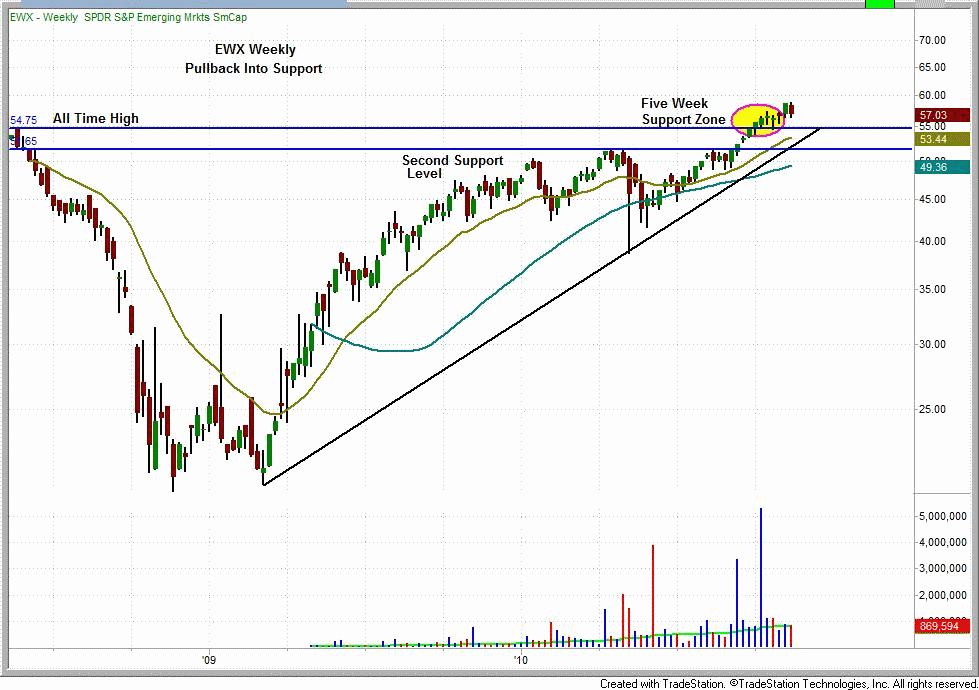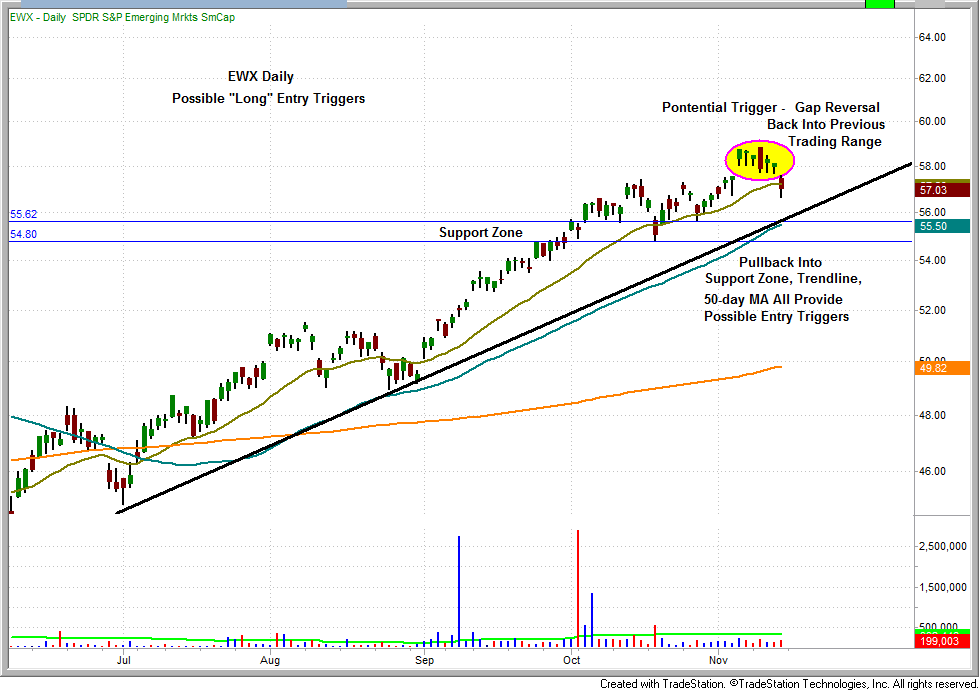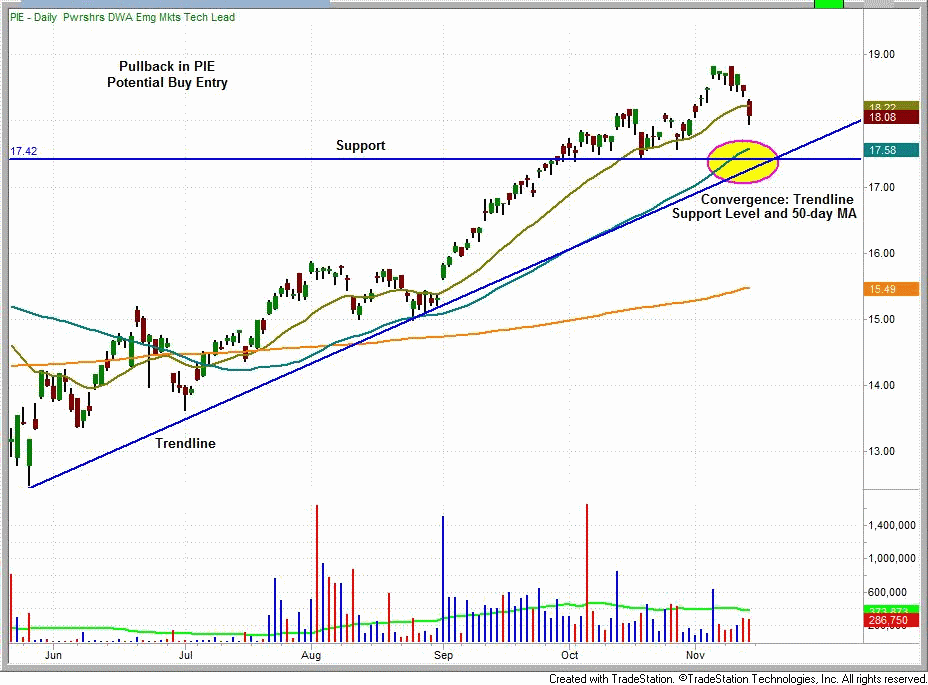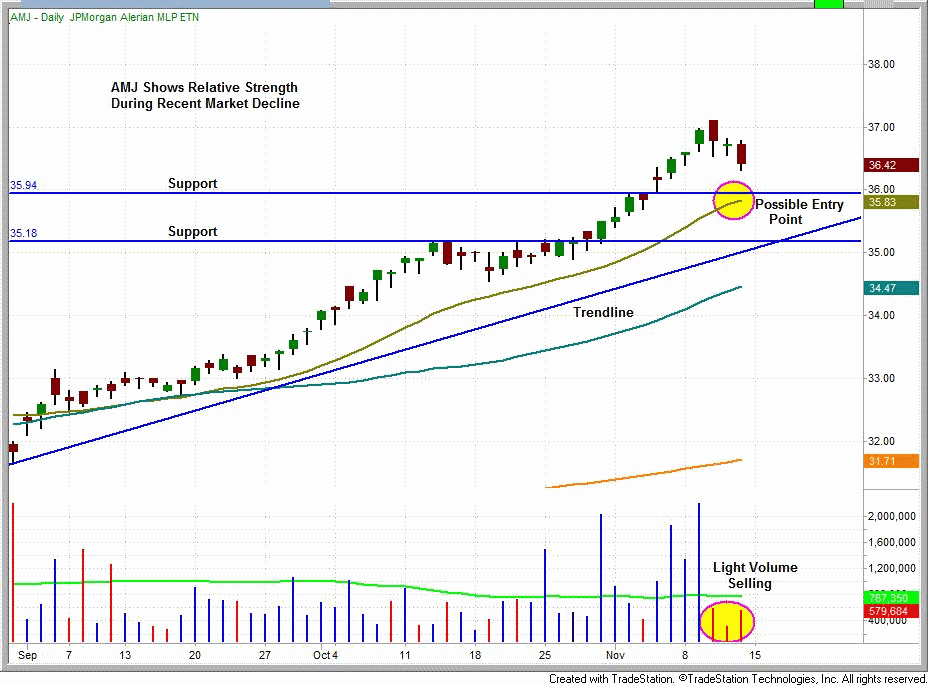Commentary:
Friday’s trading brought the markets to their ugliest close in three weeks. The major indices gapped down at the open, rallied briefly and sold off sharply until 1:00 pm. The remainder of the trading day saw stocks struggle to close just above the session lows. The small-cap Russell 2000 led all indices in the selloff, as it closed down 1.7% on Friday. Both the Nasdaq and the S&P MidCap 400 dropped 1.5%, while the S&P 500 and the Dow Jones Industrial Average shed 1.2% and 0.8% respectively. For the week, the Nasdaq fell 2.4%, while the Dow and S&P 500 both lost 2.2%.
Friday’s internals varied somewhat between the NYSE and the Nasdaq. Trading on the NYSE can be characterized as a distribution day. Volume on the NYSE was up 7.6%, and declining volume outpaced advancing volume by a factor of 8.8 to 1. The picture was not as clear on the Nasdaq. Nasdaq turnover dropped 17% during the session, while the ratio of declining to advancing volume was 4 to 1. It is likely that at least some of the drop in Nasdaq volume is attributable to lower turnover in CSCO day over day. Nonetheless, selling was strong today on both indices.
In recent newsletters the focus has at times shifted to the potential of a market reversal. However, we have not been placing short positions on the watchlist. Why? The broad market is still in an uptrend. Even weak ETFs, unless they are not highly correlated to the market, will begrudgingly move with the trend. They have relative weakness but it’s still difficult to trade against the broad market. Distribution days, as measured by market internals, have yet to show the extremes necessary to signal a major trend reversal. Typically, the market needs to see three to five days of heavy distribution before for a trend reversal can occur. Only under such pressure can key support levels typically be breached, and trends reverse. Until this happens we are inclined to buy ETF’s trading at all time highs (or 52 week highs) on pullbacks or purchase inverse ETFs that are not highly correlated t the market. There are times when it’s best to plan ahead for the next entry. Patience is an important skill when the technical indicators suggest caution. It is unwise to manufacture trades.
The SPDR S&P Emerging Markets Small Cap ETF (EWX), meets the criteria described above. EWX recently broke to all time highs. It is now in the midst of a pullback into support. Both weekly and daily charts are provided below. Based on our technical trading methodology, EWX has not yet provided a buy signal. There are several possible buy set ups for EWX. A strong move or gap back above the 20-day MA is one possibility. Others include consolidation above/within the “support zone” (see charts) or a pullback to the trend line and/or the 50-day MA.


The PowerShares DWA Emerging Markets Tech ETF (PIE), may also provide a buy entry on this pullback. Notice the convergence of horizontal support, the trend line and the 50-day MA. A selloff into this “triumvirate” could present the perfect buying opportunity.

The JPMorgan Alerian MLP ETN (AMJ) has been in a powerful advance since April, 2009. AMJ has been one of the strongest performing ETFs over the past 52 weeks. Not only has AMJ been demonstrating relative strength to the market, but also to other very strong ETFs. Notice that AMJ is still well above its 20-day MA. Given the last few days of selling, very few ETFs share this resume. Although it is not drawn on the chart, a secondary trend line coincides with the 20-day EMA for AMJ. AMJ has broken the neckline of a head and shoulders pattern. A quick look at a 30-minute six day chart of this ETF suggests a projected drop to $35.90. The 20-day EMA coincides with this price level. We will be watching AMJ for a possible long entry trigger.

Each of the EFTs discussed in today’s newsletter appear to be good buying opportunities. Nonetheless, we have not placed any of them on the watchlist. It is generally advisable to wait for the set up to develop, and only enter the trade based on analysis of the position at that time. Many conditions can change between the time a trade is recognized as a setup, and the time the trade triggers. Information such as broad market activity, price action and volume action play a big role in the decision process. Our trading rules require that we wait.
As a reminder, we are in options expiration week.
Today’s Watchlist:
There are no official setups for today. As always, we will send an Intraday Alert if any new trades are made.
Daily Performance Report:
Below is an overview of all open positions, as well as a performance report on all positions that were closed only since the previous day’s newsletter. Net P/L figures are based on the $50,000 Wagner Daily model account size. Changes to open positions since the previous report are listed in red text below. Please review the Wagner Daily Subscriber Guide for important, automatic rules on trigger and stop prices
Per intraday alert, bought YCS five minutes after the open.
IWC triggered our protective stop.
- Reminder to subscribers – Intraday Trade Alerts to your e-mail and/or mobile phone are normally only sent to indicate a CHANGE to the pre-market plan that is detailed in each morning’s Wagner Daily. We sometimes send a courtesy alert just to confirm action that was already detailed in the pre-market newsletter, but this is not always the case. If no alert is received to the contrary, one should always assume we’re honoring all stops and trigger prices listed in each morning’s Wagner Daily. But whenever CHANGES to the pre-market stops or trigger prices are necessary, alerts are sent on an AS-NEEDED basis. Just a reminder of the purpose of Intraday Trade Alerts.
- For those of you whose ISPs occasionally deliver your e-mail with a delay, make sure you’re signed up to receive our free text message alerts sent to your mobile phone. This provides a great way to have redundancy on all Intraday Trade Alerts. Send your request to [email protected] if not already set up for this value-added feature we provide to subscribers.

Having trouble seeing the position summary graphic above?
Click here to view it directly on your Internet browser instead.
Notes:
Edited by Deron Wagner,
MTG Founder and
Head Trader